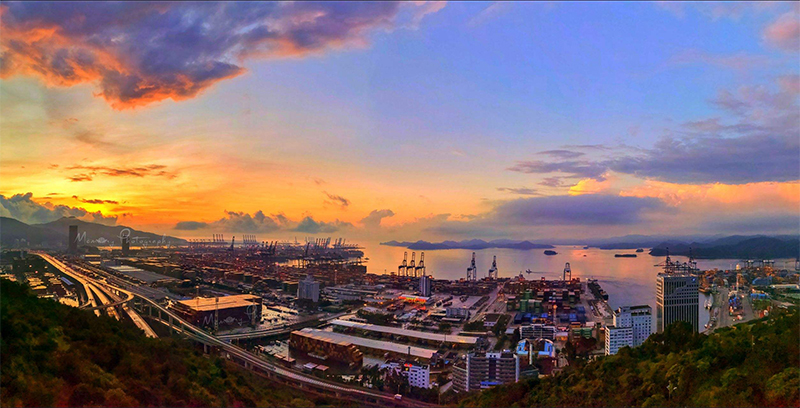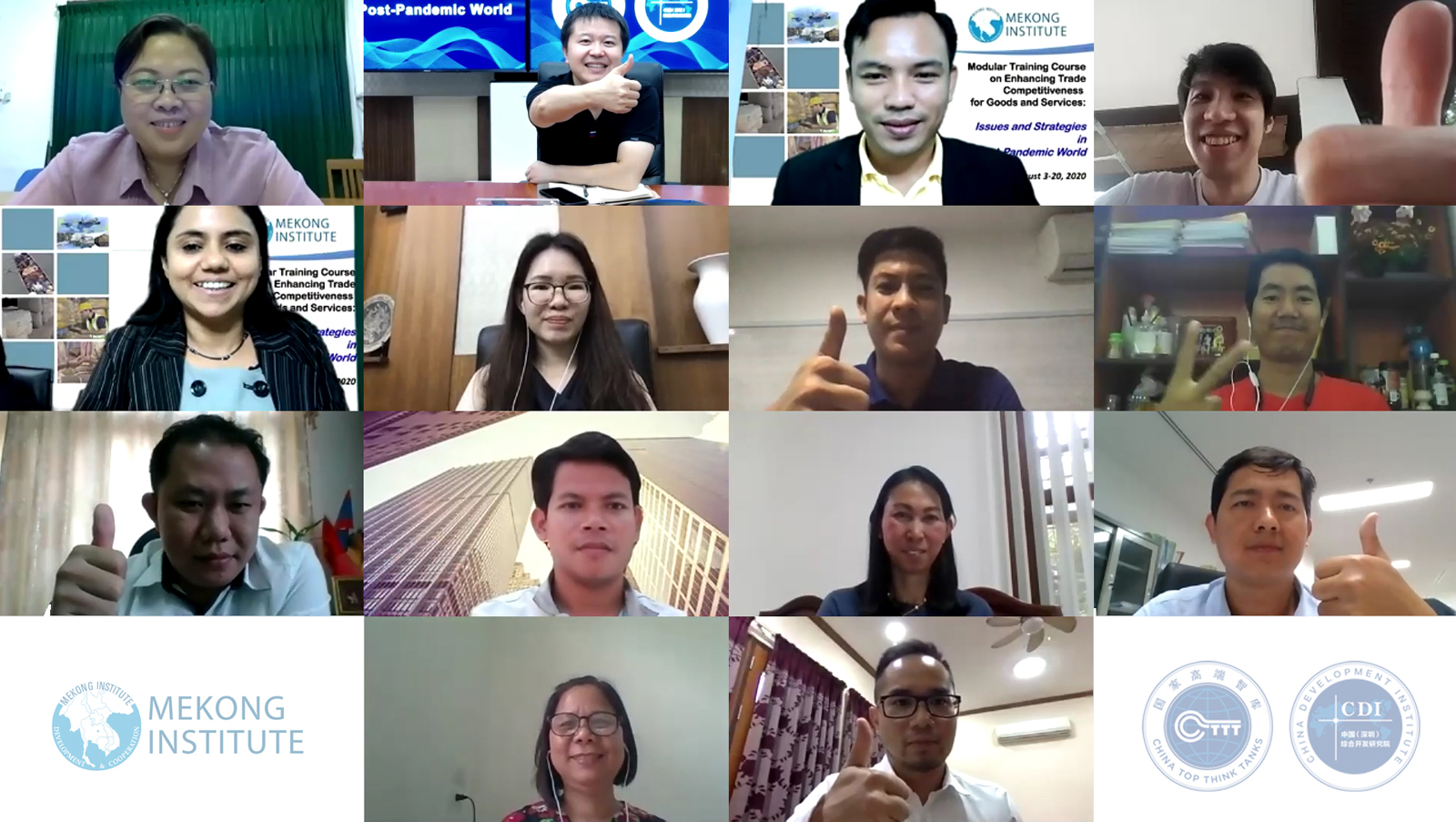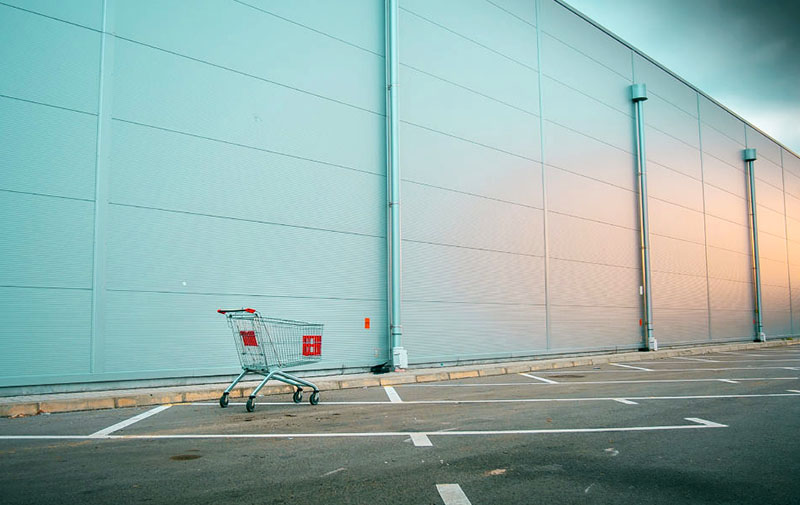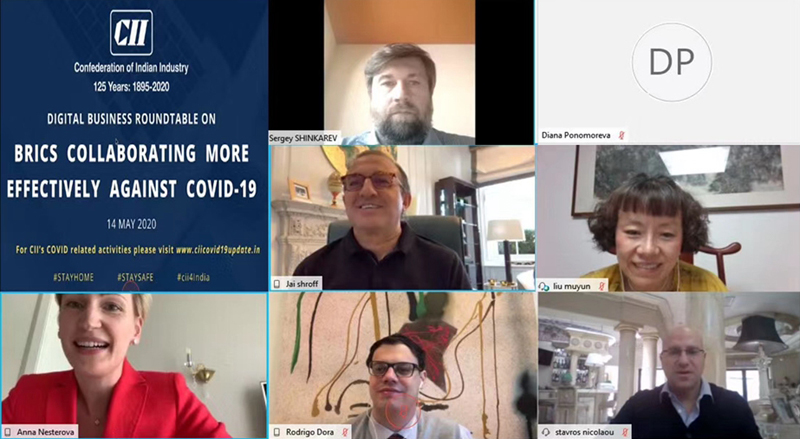Connecting business, promoting shared prosperity and sustainability in the post-Covid new economy
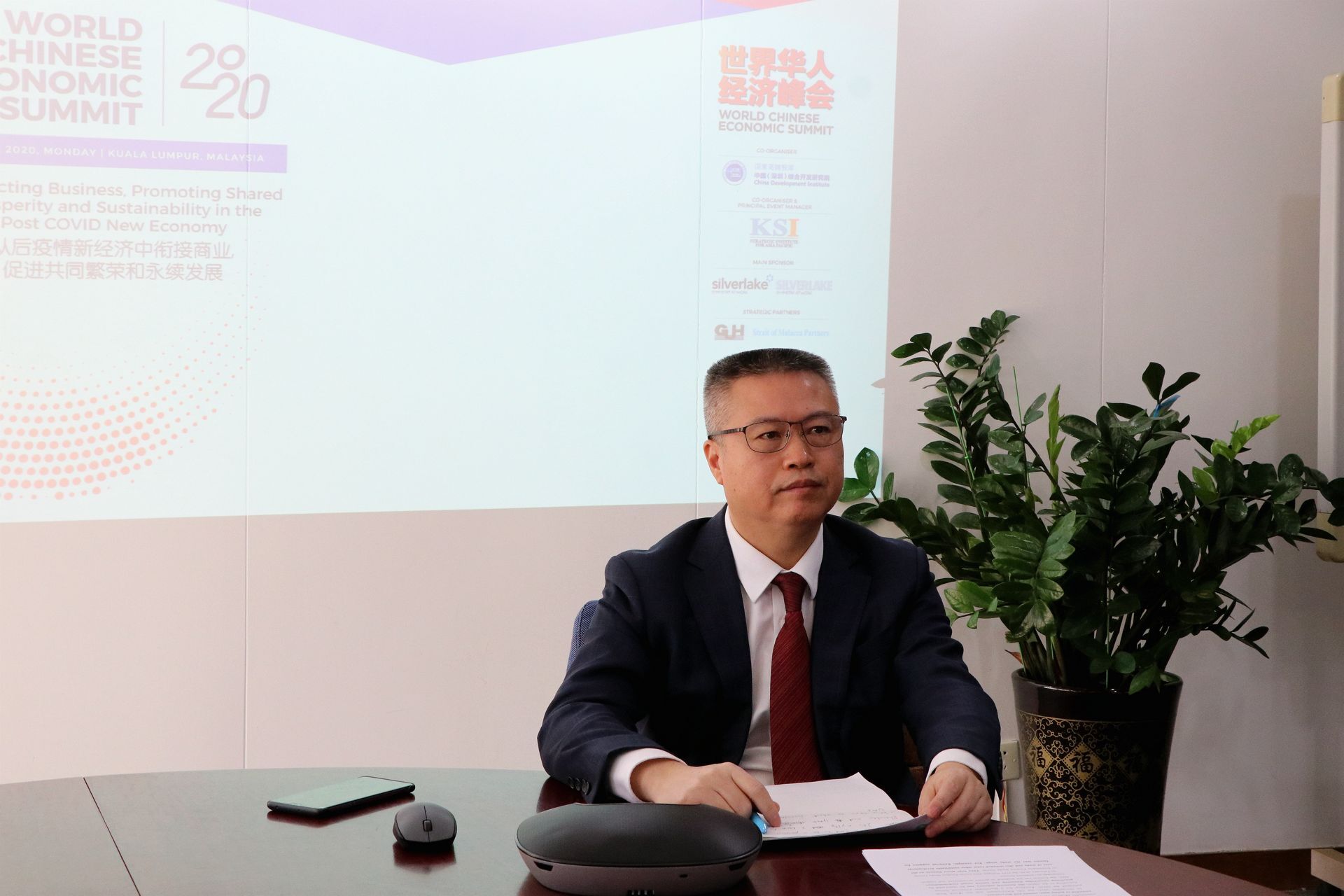
This year’s edition of World Chinese Economic Summit was held in Kuala Lumpur, Malaysia on December 21, themed “connecting business, promoting shared prosperity and sustainability in the post-Covid new economy”.Amid this winter’s resurgence of coronavirus cases, panelists agreed that international economic cooperation is pivotal and pressing even though global trade tension continues.
With a focus on economic reinvigoration and international trade and investment under the post-Covid new normal, Prof. Fan Gang, President of CDI, and Dr. Guo Wanda, Executive Vice President of CDI, spoke on China’s economic outlook and “dual circulation”, and the promotion of sustainable financing for Belt and Road Initiative.
China’s economic outlook amid international challenges
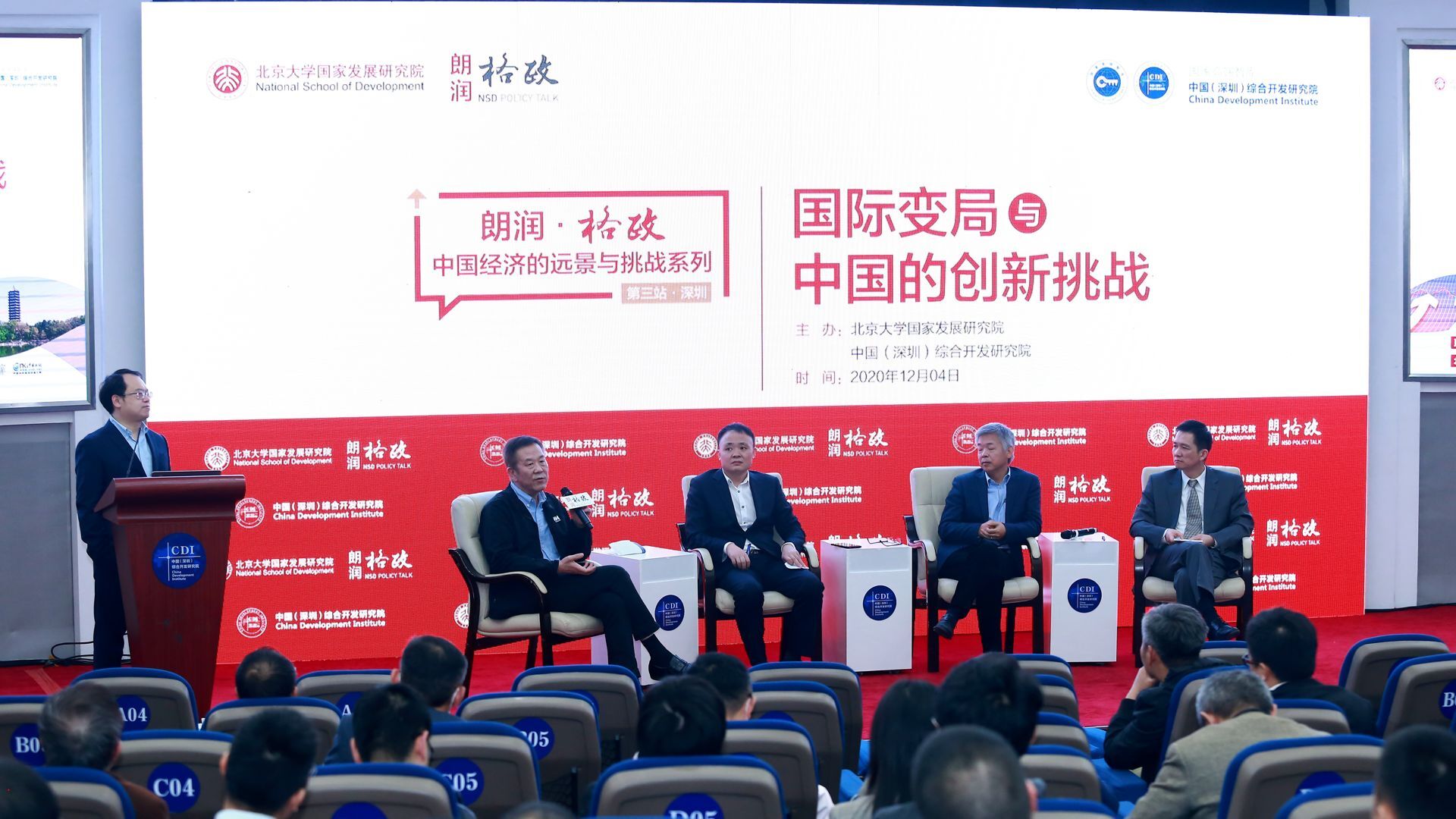
On December 4, China Development Institute and National School of Development at Peking University co-hosted the 149th NSD Policy Talk on China’s economic outlook amid the COVID-19 outbreak and new international challenges. The event was also livestreamed on multiple media outlets.
Prof. Fan Gang, President of CDI, Prof. Yao Yang, Dean of NSD, Prof. Tang Jie, former Deputy Mayor of Shenzhen, Prof. Huang Yiping, Deputy Dean of NSD, and Dr. Zheng Shilin, Research Fellow of NSD shared insights on the economic challenges that China faces in a time of global uncertainty. The panelists suggested that China needs to continue the endeavor in scientific research, technological innovation, reform of state-owned enterprises and finance industry.
Recovery slows, but continues
Industrial output rose 4.8% y/y in July, the same rate as in June, down 1.1 pps from Q4 2019. Investment grew 8.3% y/y, up 2.7 pps from June, and up 2.9 pps from Q4, and is still mainly driven by state investment, with a growth rate of 12.7% y/y. The best performer among fixed asset investments is real estate, with a growth rate of 11.6% y/y in July, up 3.7 pps from Q2.
Consumption is still weak, and was down -1.1% y/y, and up 0.7 pps from June, showing customers’ caution over COVID-19. In July, exports grew 10.4% y/y, up 6.1 pps from June, and up 6.4 pps from H2 2019, possibly due to the halt of overseas production. Imports are fluctuating significantly, and aren’t showing any trend. They rose 1.6% y/y, down 4.6 pps from June.
Producer price growth is trending up. The ex-factory price index of industrial goods rose 0.4% m/m and fell -2.4% y/y. PPI rose 0.9% m/m, and fell -3.3% y/y. Growth of the two indices is down 0.6 and 1.1 pps from June. But we expect future producer prices to at most rebound to their pre-pandemic growth rate levels. CPI rose 2.7% y/y, up 0.2 pps from June. We expect its rise to be temporary.
Major financial indicators have been falling, or flat. M2 rose 10.7% y/y, down 0.4 pps from June. Loans rose 13% y/y, down 0.2 pps from the end of June. M1 grew 6.9% y/y, up just slightly, by 0.4 pps.
On August 14th, a pioneering digital currency initiative initiated by the People’s Bank of China stated that that it would expand the trail program to a number of large cities, with the involvement of the big four state banks. China’s Alibaba has already entered into a “strategic partnership” with the Central Bank over the sovereign digital currency plan. We view digital currency reform as part of the Chinese government’s grand Fintech plan. It will make financial transactions easier, by reducing the intermediary role of commercial banks, directly benefiting small and medium-sized firms.
CDI researcher speaks on coronavirus control and economic recovery in online lecture
On August 11, Dr. Guoping Zhang shared views on China's experience and practice on coronavirus prevention and control, and elaborated on the economic recovery action plan and challenges brought by the pandemic. This lecture was part of the online training program "Enhancing Trade Competitiveness for Goods and Services: Issues and Strategies in Post-Pandemic World" organized by Mekong Institute. Participants of the program include mid-level officials from government ministries and departments, think tanks, academic and research institutions, as well as those from the private sector representing business associations, export companies, and SMEs representing Lancang-Mekong countries.
Coping with Covid-19 – stepping up Sino-Japan economic and trade cooperation
Information
The global economy has been hit harder during the Covid-19 pandemic. As two of East Asia’s major players, China and Japan’s robust regional collaboration will help mitigate the negative effects of Covid-19, as well as to stabilize regional economy and facilitate future economic growth. In this regard, academics from China, Japan and the USA have joined together to debate the potential ways for strengthening Sino-Japan economic and trade cooperation in a time of global pandemic.
Date: June 28, 2020
Host: CDI
Theme: Coping with Covid-19 – stepping up Sino-Japan economic and trade cooperation
COVID second wave lowers our growth forecast
Industrial output rose 4.4% y/y in May, up 0.5 pps from April, comparable to its pre-pandemic level, and was down just 1.5 pps from Q4 2019. Investment was up 3.9% y/y, and up 3.1 pps from April, down 1.5 pps from Q4. Government investment is the main force lifting overall investment growth.
Consumption demand continued to recover in May. Retail sales of social consumption goods fell 2.8% y/y, up 4.7 pps from April. The global pandemic is not showing any sign of abating, and is heavily impacting trade. In May, exports were up 1.4% y/y, down 6.8 pps from April, while imports plunged 12.7% y/y.
Prices are all falling, creating conditions for future money expansion. The CPI rose 2.4% y/y, down 3 pps from January, mainly driven by food prices. Producer prices fell further. The ex-factory price index of industrial goods decreased 3.7% y/y, and the PPI fell 5% y/y, down 0.6 and 12 pps respectively from April.
Monetary policy is expanding. Major financial indicators all show upward trends. At the end of May, M2 was up 11.1% y/y, and M1 up 6.8% y/y, up 2.3 and 2 pps from the end of February.
On June 12th, Beijing reported its first local coronavirus case, after more than 50 days with zero new locally-transmitted cases. A total of 236 new confirmed cases had been recorded by the writing of this report. Even though such numbers seem insignificant, much evidence shows that COVID-19 might be entering a second phase. This has significantly increased public, and investor, sentiments of uncertainty. Our own survey data shows that 30% of Chinese people believe this virus will persist for a long time. Factoring in the worsening global situation, we are revising downward our GDP growth forecast to 1.4%, which is below other major forecasts, such as that of the IMF.
Moving toward pre-pandemic levels
The National Committee of the Chinese People's Political Consultative Conference (CPPCC) convened the annual two sessions on May 21st. Although for the first time the government did not set an annual growth target - possibly due to so many COVID-19 uncertainties ahead - we expect the implicit growth target is 1.8% for now, given the projected deficit and inflation numbers.
The economy is quickly recovering, as the pandemic has come under control. In April, industrial output growth turned positive, and was up 3.9% y/y, and up 5 pps from March, down only 2 pps from the pre-pandemic level, in Q4 2019. Investment was up 0.8% y/y, and up 10.3 pps from March, mostly driven by expansionary state investment.
Consumption decreased less. Retail sales of consumption goods fell 7.5% y/y, up 8.3 pps from March. Exports were 4% y/y, comparable to the pre-pandemic level. Imports fell 6.1% y/y after seasonal adjustment, down 5.4 pps from Q1. Decreased imports are in line with overall weak domestic demand.
CPI was up 3.3% y/y after seasonal adjustment, down 1 pps from March. We expect CPI to fall further this year, led by large declines in food-related categories.
Monetary policy shows strong support for the economy. M2 was up 11.1% y/y, and M1 increased 5.5% y/y, up 1 and 0.5 pps from March. RMB loans from financial institutions were up 13.1% y/y, up 0.4 pps from the end of March.
China’s housing prices rose at a slightly faster pace in April. According to the National Bureau of Statistics (NBS), average new home prices in 70 major cities rose 0.5% in April from March, a pace not seen since October 2019, and following a 0.1% increase in March. The strong housing market lends support to macroeconomic and financial stability; for example, around 50% of loans in China are directly or indirectly linked to the real estate market. Strong housing investment also shows investor confidence amid domestic pandemic and global economic uncertainties, a key factor furthering the overall recovery.
CDI representative speaks at webinar of BRICS collaborating more effectively against COVID-19
Dr. Liu Muyun, CDI Guest Research Fellow and Director of the National and Local Joint Engineering Laboratory of Personalized Cellular Therapy, participated in the virtual session of BRICS collaborating more effectively against the global pandemic as a panelist.
Dr. Liu Muyun shared Chinese experience in containing COVID-19 and its impact on Chinese individuals and businesses, and then she pointed out that the new normal of post-COVID-19 would be like strengthening regulation on cross-border flows of people and goods, creating supply chain resilience, building remote business models and supporting healthcare IT infrastructure.
The panelists, healthcare sector business leaders from the BRICS countries, agreed that BRICS should collaborate more effectively by sharing COVID-19-related information and knowledge, making special allocations for medical supplies and pharmaceutical products, and mobilizing funds to cope with the global pandemic.
*Photo Credit: CII
“Probable information” and “regretless action”
Author: Fan Gang, President of China Development Institute
Editor’s Note: How can we cope with uncertainty during the initiate stage of pandemic? We should release “probable information” and take “regretless actions” instead of missing the window of opportunity, which is what we learn in the COVID-19 pandemic from the perspective of economics.
The toughest economic issue derived from the COVID-19 pandemic is “uncertainty”, which refers to not knowing the trend of something due to either the lack of existing knowledge or the insufficiency or inaccuracy of available information.
The first uncertainty about COVID-19, a virus that has never appeared before, is that people knew nothing about it when it was first discovered. Once cases emerge, the medical institutions and local governments should promptly report to experts of statutory authorities for scientific analysis. A public health disease cannot be defined without rigorous scientific research. It is fair to say that we would all be in a period of “uncertain information” before basic issues are clarified.
Another question pertains to how information should be released. How can you explain things you don’t yet understand to the public? How should governments, at both central and local levels, make decisions during what seems to be a “protracted” period of uncertainty before the release of exact information by national authorities? How should they explain to the public after decisions are made? What information can and should be released to the public when no exact information is available?
In this period of uncertainty, should we do nothing and helplessly watch the precious window of opportunity to slip away? When we take no actions because of our ignorance about the disease, it will continue to spread. As a result, we will lose the best chance to contain it.
This is the dilemma we may fall into. We need to find a better way to deal with this “protracted” period of uncertainty, that is, seeking truth from facts, acknowledging uncertainties, releasing “probable information” during the period of uncertainty, and timely taking “regretless” and preventive actions on a limited scale according to this information.
“Probable information” refers to incomplete or uncertain information. Instead of offering no information at all, it includes speculations and judgment on the basis of a limited amount of facts. “Regretless action” involves relatively low cost and rather slight negative effect. If the early judgment is later found to be misguided, it would be rather easy to correct. Its most important value should be interpreted “in reverse”: if actions are not taken now, not even actions with little disturbance, then we would regret it even more in future for wasting the window of opportunity for pandemic prevention.
For example, first of all, the protection of medical personnel in a region (or city) can be strengthened. This measure comes at a rather low cost and helps to ensure the health of medical staff. Even if the “pandemic” turns out to be nothing, we will not regret taking such an action. Next, suggestions can be made to residents in the pandemic-hit city to wear masks. This measure will come at a cost, including the cost of materials for making masks and the discomfort of wearing them, but the cost is relatively low. Then it is also possible to strengthen sanitation efforts in public places and restrict and reduce big gatherings. These are all preventive measures with low cost. Moreover, as the situation becomes clearer, the local government may even impose stricter restrictions on residential areas and commercial districts. The cost of this local preventive measure is still relatively low from a national perspective, while its benefit is to timely contain the pandemic within a local range and prevent it from escalating to a public health crisis. If the measure is later shown to be over-reacting, it can be corrected without too much difficulty. All of them are early preventive measures that can be introduced at a local scale before definite information is available.
The following conclusions can be made based on the above analysis:
Decision-making regarding major preventive measures, like lockdowns, must be based on definite information. This kind of definite information, provided by statutory authorities on the basis of scientific research, will inform decision-making of the central government. China’s existing laws and regulations have clear and unalterable stipulations about it.
The period starting from the appearance of the first case to the announcement of definite information by the statutory authority is a “period of uncertain information”,during which the primary task of medical institutions and local governments is to provide accurate information to authoritative departments in a timely manner. This is also clearly stipulated in China’s current laws and regulations, and needs to be effectively implemented.
Meanwhile, the following provisions should be included in national regulations on the management of major public health incidents: local pandemic prevention agencies and local governments during the period of uncertain information should be allowed to issue “probable information” and take “regretless” actions in a prudent manner as early preventive measures. If the information is far from being certain, the local government can take moderate “regretless actions”, while stronger preventive measures may be taken by authoritative agencies at higher levels only when the information reaches a higher degree of certainty and when the pandemic is proved to be severe.
What needs to be made clear is that information release and preventive measures are complementary to each other. If local governments take “regretless” actions early on, they must be allowed to issue the then available but not so certain information - the “probable information”. Otherwise they cannot explain to the public why these preventive measures are necessary. What’s more, it is also important to explicitly tell local residents about the uncertain nature of the “probable information” when it is released, and that the final decisions will be made by more authoritative agencies.
The authority of local health and pandemic prevention agencies and local governments to take actions should also be clarified through laws and regulations, with detailed implementation processes, decision-making procedures and action guidance. It can also be categorized into several levels of response, which should follow stipulated procedures.
To discuss these issues now is, of course, to mend the fold after a sheep is lost, but can help us do better when facing similar situations next time, though we do hope that there will not be a next time.
The Economic Road to Post-Covid-19 Recovery Fast or Slow?
Information
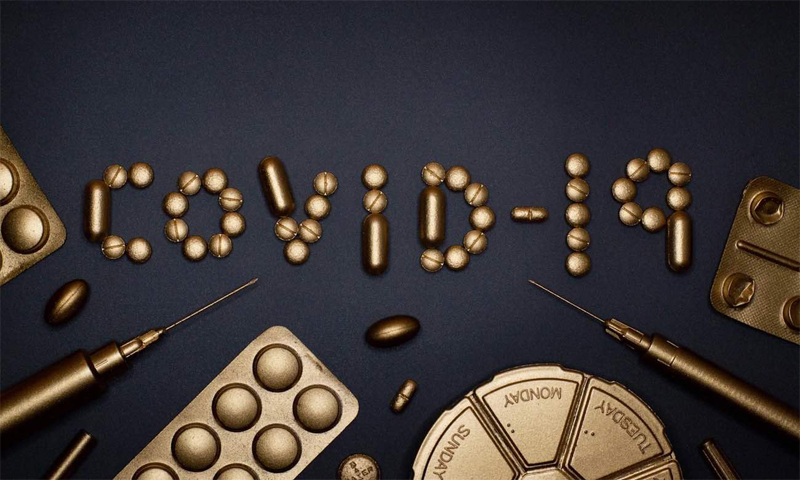
China’s GDP shrank 6.8% in the first quarter of 2020 and projections for the year are of a significant slow-down from ‘normal’ growth of 6% or more. Covid-19 is hitting Western economies later, and seemingly harder. Western GDP is widely expected to decline. As China leads the way out of covid-19 lockdown and tries to grow again, what can locked-down westerners spend their time usefully thinking and learning about.
Date: May 7, 2020
Host: CDI and Z/YEN
Theme: The Economic Road to Post-Covid-19 Recovery Fast or Slow?

